UC Blogs
Another Day, Another Ton of Weeds
Here I am, writing when I could be outside either flying the dog or ripping out more weeds from the “dry” creek. That darn “dry” creek has more water in it just now since the rain yesterday than the dog’s water bowl. I wasn’t really kidding about flying the dog as LuLu weighs just over 9 pounds and has very large ears and there is a very stiff wind blowing. Bruce and I joke around that at a time like this, hitch LuLu to her leash and let her soar instead of walk to the nearby park.
Earlier this week, we got down and dirty with the chemicals in the war against Bermudagrass, various other grass varieties, and my old “buddy” – oyster salsify! Using the IPM system, we have managed to NOT hold our own against these “arch fiends” of the home and garden.
Nope, not a napalm strike exactly, but the judicious use of herbicides and pre-emergents to keep from mowing in the house itself.
Pre-emergents are very useful tools in order to contain weed seeds when used at the proper time. Use in October for the spring weed seeds and again in February for the fall and winter weed seeds. It’s very simple and quite easy. I missed out in October because there was no rain; with the product I use, I need at least ½ inch of water. With Bruce, no rain = no spray; it’s not that he’s not a believer, but water = $$$ which he is loathe to spend. With rain, he’s raring to go, so it got done!
The grass spraying is a more delicate proposition. Using an all-purpose herbicide means death to any plant getting hit. So the game plan is: select the target, find an herbicide for that particular target group and read, READ the label. Select the appropriate product and use according to the directions to the letter!
So far, the spraying of the grassy weeds in the rose beds, the backyard potion of the dry creek, and the other areas of the back and side yards has been completed. I’m holding my breath that the guaranteed shades of red and/or brown will appear showing the weed plants are on the way out and make the other grassy weeds quake on their roots.
The last few years have been the years of grassy weeds. When we first started out here, there was nothing but tumbleweeds growing in the back forty. It only took 2 years to get rid of them but now, in a way, I wish those tumbleweeds, Russian thistle (Salsola iberica) were still here. I don’t know if you’ve read in the little magazines from the newspapers that some towns have festivals with prizes for the best use of the things and the having the biggest! Wow, my crops would have taken 1st prizes and built mansions! Alas, this information has come years too late!
Next were the years of the bristly oxtongue (Picris echioides). That stuff grows everywhere, and if you get dermatitis from it as I do – it got left alone as Bruce doesn’t do “prickle bushes” and I worked well out of town. Then came dandelions and finally the oyster salsify and the Bermudagrass. Unfortunately, for this group of weeds, I’m retired now and have all the time in world – my back allowing – for pulling up and hoeing the little darlings! The beautiful thing these days is now I’m the supervisor now at home and I’ve given myself a long lunch, starting now. See ya!!
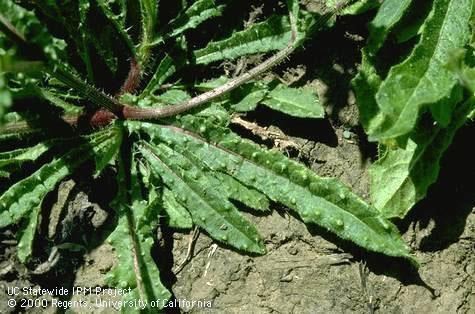
Bristly oxtongue. (photo by Jack Kelly Clark)
Linking Art with Science
So, you want to know more about butterflies and art, and the link between art and science. You’re in luck. Butterfly expert Art Shapiro,...

Butterfly expert Art Shapiro of UC Davis. (Photo by Kathy Keatley Garvey)
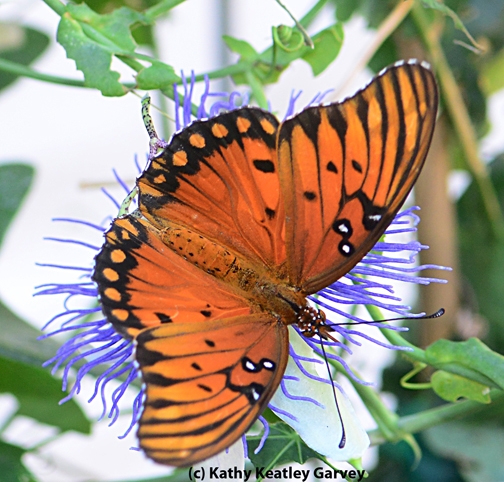
Gulf Fritillary butterfly on passion flower blossom. (Photo by Kathy Keatley Garvey)
Thankful for Insects
Of the many things I'm thankful for on this Thanksgiving Day, I am thankful for the millions of insects that populate our planet. Scientists have...
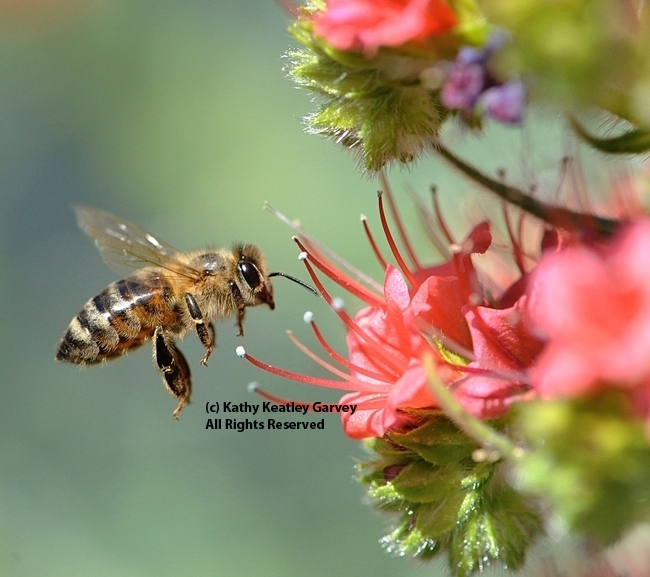
A honey bee heading for a tower of jewels, Echium wildpretii. (Photo by Kathy Keatley Garvey)
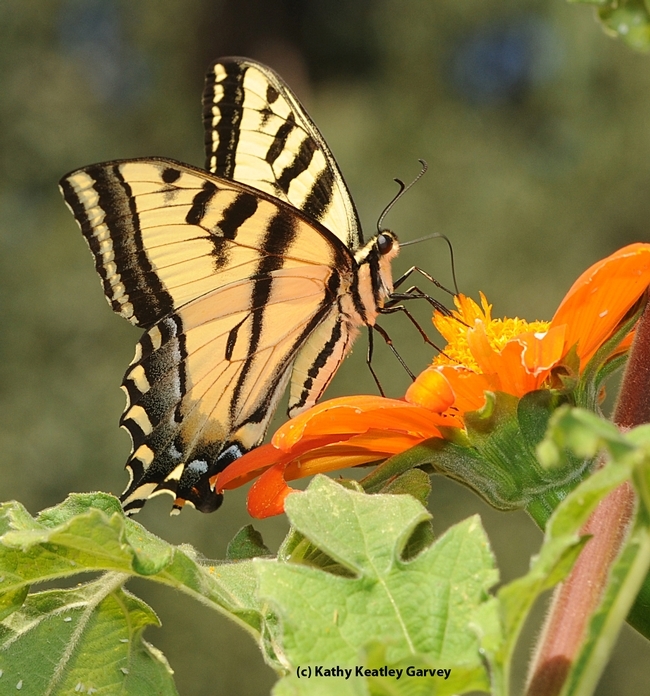
A Western tiger swallowtail on a Mexican sunflower. (Photo by Kathy Keatley Garvey)
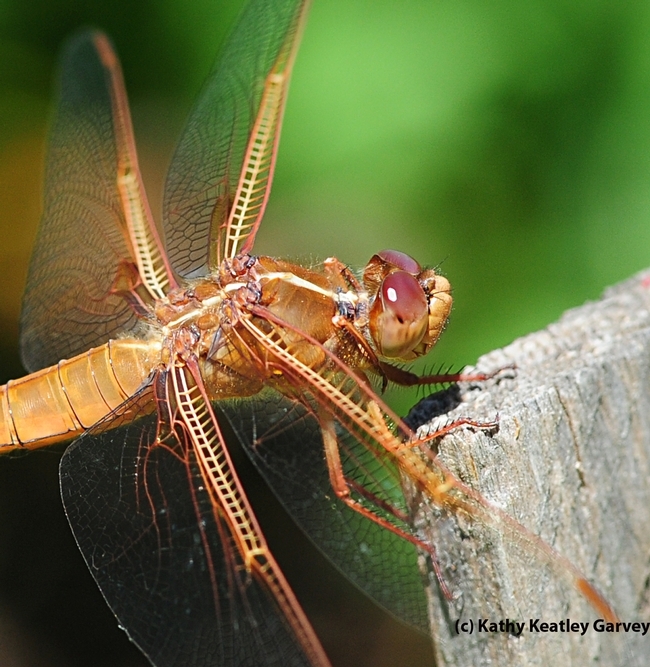
A flame skimmer dragonfly at rest. (Photo by Kathy Keatley Garvey)
Gardeners Greenhouse
Recently, a friend of my husbands asked if we would like to come to his home to see the greenhouse he, his son and wife had built in their backyard. He went on to tell us how successful his summer garden had been and where he had donated his excess produce. On a weekly basis, he took bags of produce to Opportunity House and the Episcopal Church in Vacaville plus Mission Solano in Fairfield.
Needless to say, I was curious about his successful venture, especially when he told us this success was his motivation to build the greenhouse. He wanted to grow and provide vegetables all year, not just in the summer. The vegetables he had grown were peppers, tomatoes, onions, lettuce, carrots, plus herbs, raspberries, blackberries and blue berries.
The greenhouse is 8.5 feet by 12 feet. The entrance height is 7 feet while the peak inside is 8 feet high. The welded framework is made of 2 inch steel tubing (like horse corrals and ranch gates). The four corner anchor posts are cemented and the rest of the greenhouse is clamped to these posts. This allows it to stand straight on uneven ground. There are two ends with nylon screen “windows” and a window in the rear. Over the entire framework is ‘Green.tek’, a plastic sheeting obtained online that was designed for greenhouses. This plastic can be rolled up over the 3 windows to allow air circulation.
It took 3 weeks and several weekends to construct the greenhouse. An electrician added electricity and a water line was brought into the interior. The ‘floor’ is a thick layer of bark. Raised beds (1 ½ feet high) were built. River rock was placed in the bottom of the raised beds, with layers of leaves, potting soil and topsoil added.
This project was so gratifying, his son has decided to go into the greenhouse building business. Being a mechanical engineer he has the knowledge to succeed. Meanwhile, his dad is eager to share his produce with those in need.
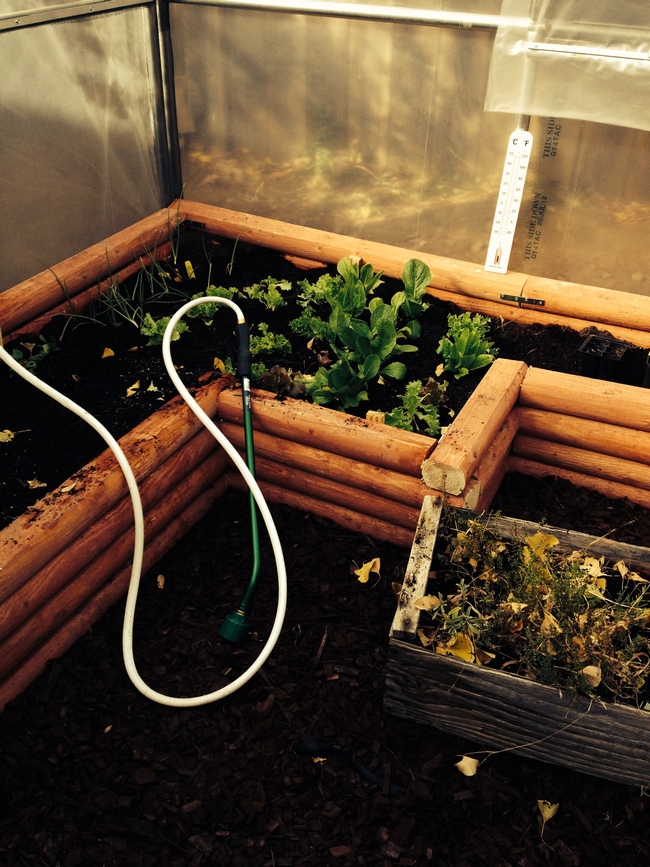
Garden bed.(photos by Sharon Rico)
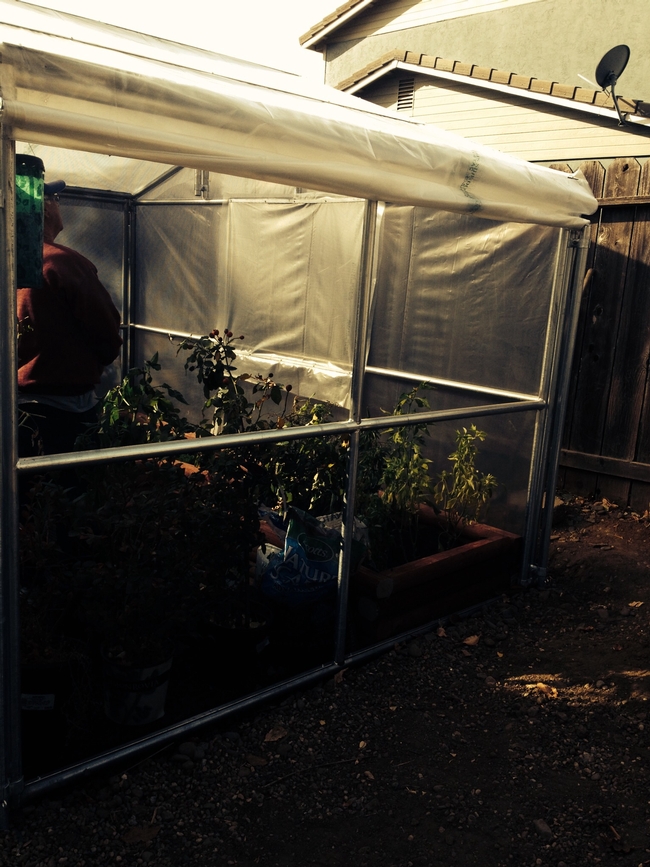
image
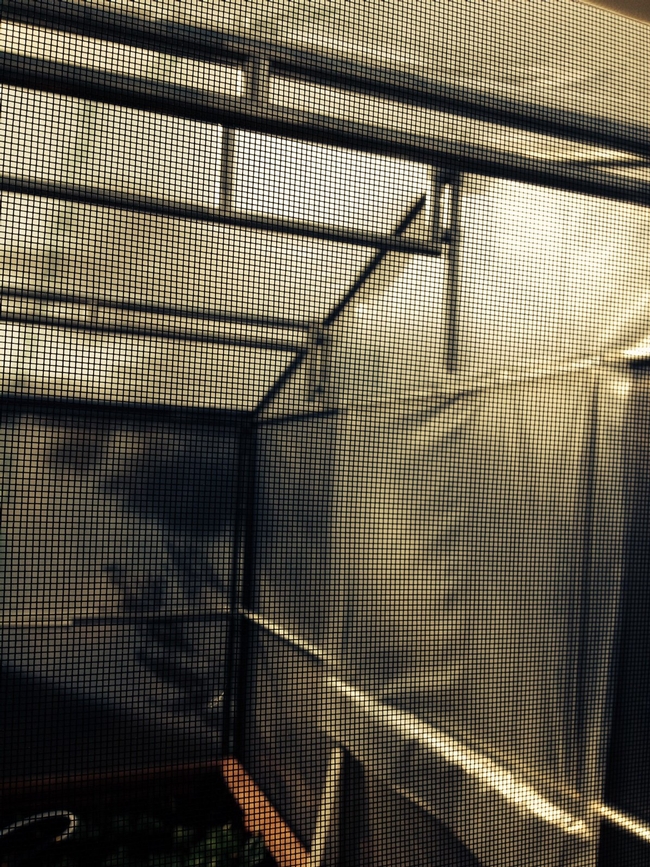
image
Fruit Stripe
Several years ago I saw a variegated Lemon at another Master Gardener's house. It was so cute and I knew I had to add it to my collection of container grown citrus on my back patio. For several years it was there but certainly didn't thrive. Frankly I was a little disappointed. Patience has never been one of my virtues.
This year has been different. Suddenly, the little tree looked positively perky Interestingly, all my citrus did well this year, something I've confirmed with other master gardeners who also had good years for citrus in their gardens. This year the cream and green variegation became even more pronounced. The variegation extends to the fruit which have tiger stripes although the books say that when fully ripe the fruit will become all yellow on the outside. Inside the flesh is pink. The experts say that this lemon is actually derived from the 'Eureka' form of the lemon. It's certainly a fun addition to the collection.
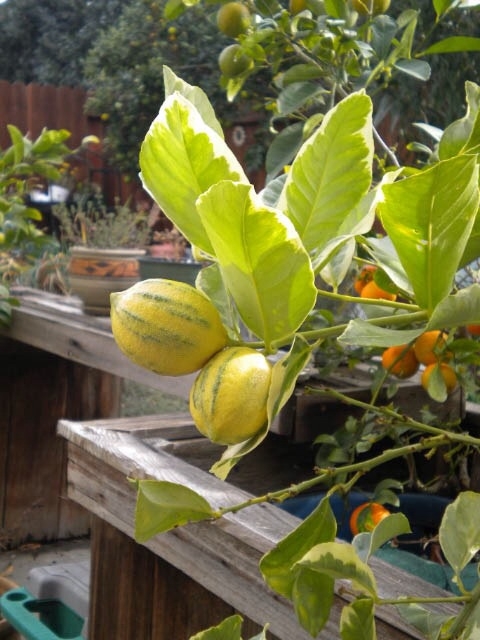
Striped lemon. (Photo by Karen Metz)

